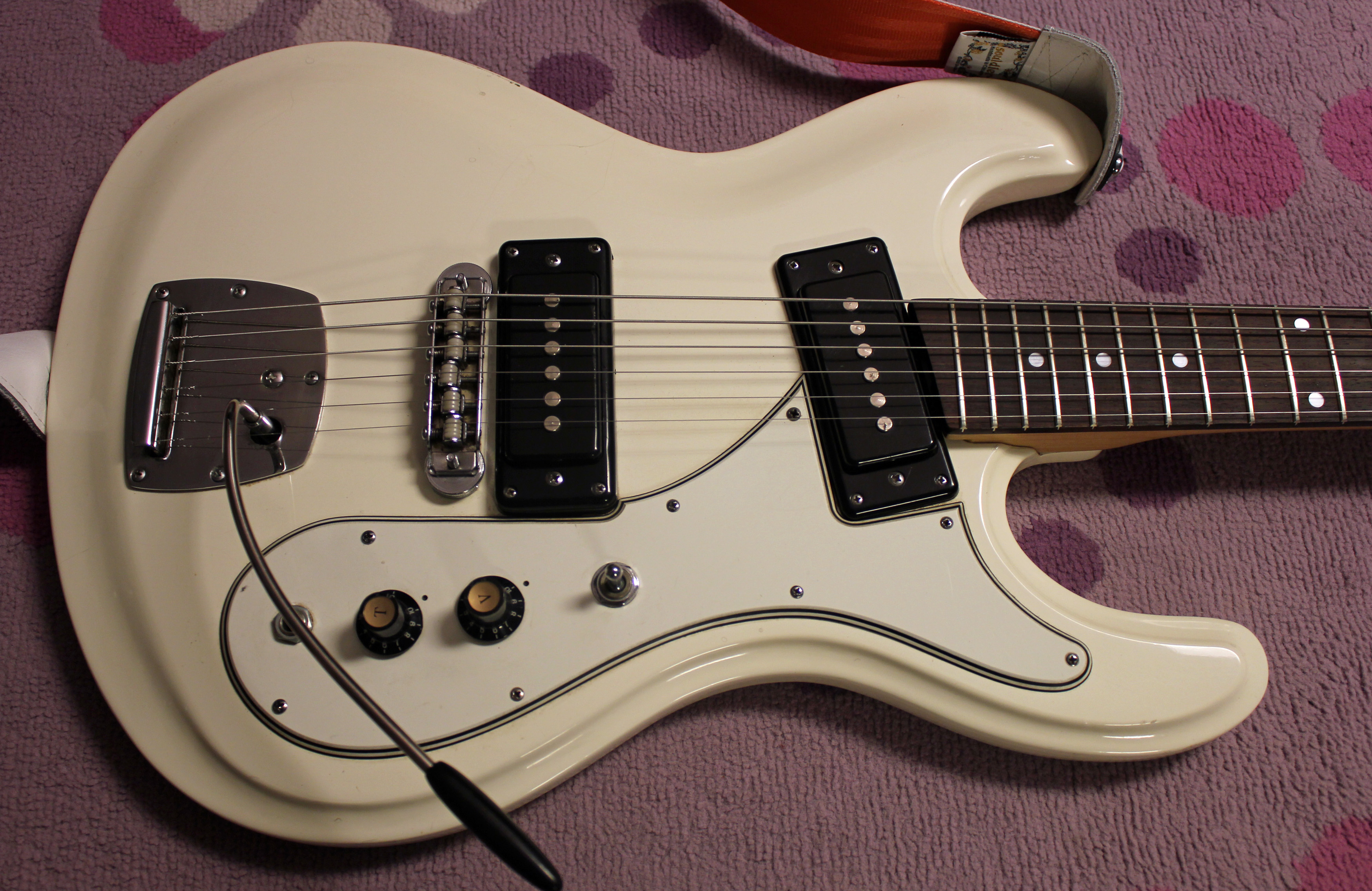About the same time frame that CBS acquired Fender Guitars and Amplifiers, Gulf and Western purchased Unicord and were now in the profitable guitar business. The year was 1967. By 1968 Gulf and Western added guitars to their the product line.
This was accomplished due to a merger with a Westbury New York company called Merson Musical Products. Merson was a guitar importer and distributor. They distributed Hagstrom guitars from Sweden, Giannini guitars from Brazil and a cheap brand of acoustic guitar called Tempo. Unicord and Merson parted ways in 1975 and outsourced manufacturing to Japan at the Matsumoku factory.
I have previously discussed the Matsumoku company's importance in the world of imported guitars. Matsumoku was a furniture company started around 1900. In the 1920's they built sewing cabinets for Singer Sewing machine and later built affordable guitars under different labels for export.
Unicord continued using the Univox name on guitars until sometime in 1978 though guitars were still in production. In 1982 production in Japan ceased when a fire occurred at the main factory.
The manufacturing responsibility shifted to Korea. The Korean instruments were sold under the Westbury name until the Unicord Company was acquired by the Japanese firm the Korg Company in 1985.
Many Univox guitars were copies of American made instruments such as Fender, Gibson, Ampeg (the Lucite Dan Armstrong model), Guild, Rickenbacker and Mosrite.
The most famous of Univox guitars was probably the Mosrite look-a-like known as the Hi-Flier. It is a shame that Mr. Mosley’s instrument was chosen and he received only a nod of recognition.
Semie Mosley was an outstanding luthier and guitar designer, but he was not a good businessman. Subsequently he was taken advantage of and did not have money to hire attorneys to sue for patent infringement.
The Hi-Flier was a copy of the Mosrite Ventures model and appeared around 1968. Like the original it had 22 frets on a rosewood fretboard, a white pick guard with a single volume and a single tone control and a three-way toggle switch. The neck was bolt-on style, which differed from the original. The first models feature a white truss rod cover. The later ones looked more like the real thing.
Unicord/Univox was also known for their amplifiers which were built with tubes or solid state or even hybrid tube/solidstate. These amplifiers ranged from practice amps to 100 watt stacks.
These were not inferior amps, however due to Unicords lack of research and developement and reliance on copying other company’s amplifier designs, Univox amps developed a bad reputation.
 |
| Univox Stage Amp |
Univox also manufactured guitar effects, drum machines and imported electronic keyboards from accordion manufacturer Crucianelli of Italy.
There are a couple of interesting facts resulted from the sale of Unicord to Korg. Merson founder, Bernie Mersky quit after the Gulf and Western takeover.
His partner, Ernie Briefel went on to form Music Technologies, Inc., and, Music Industries Corporation, which was in business until recently as a music product importer and distributor.
Unicord was the original U.S. importer of Marshall Amplifiers and Korg synthesizers. Marshall amplifiers actually used Unicord manufactured transformers in some of their models. The relationship with Korg was probably what prompted the acquisition. Korg's USA division then became the US distributor for Marshall.
In 1988 the Matsumoku factory in Japan was destroyed by fire which shut down manufacturing for good.
In 1992 Korg acquired the Vox musical instrument company from it’s parent Rose Morris Music of the U.K. and manufacturing shifted to the Far East.
This turned out to be not a bad thing, since Korgs research and development department has redesigned the AC30 to be as close to Tom Jennings original sound only using modern construction.
As of last year, 2010, Marshall ended its relationship with Korg USA and now distributes its own amplifiers.








































